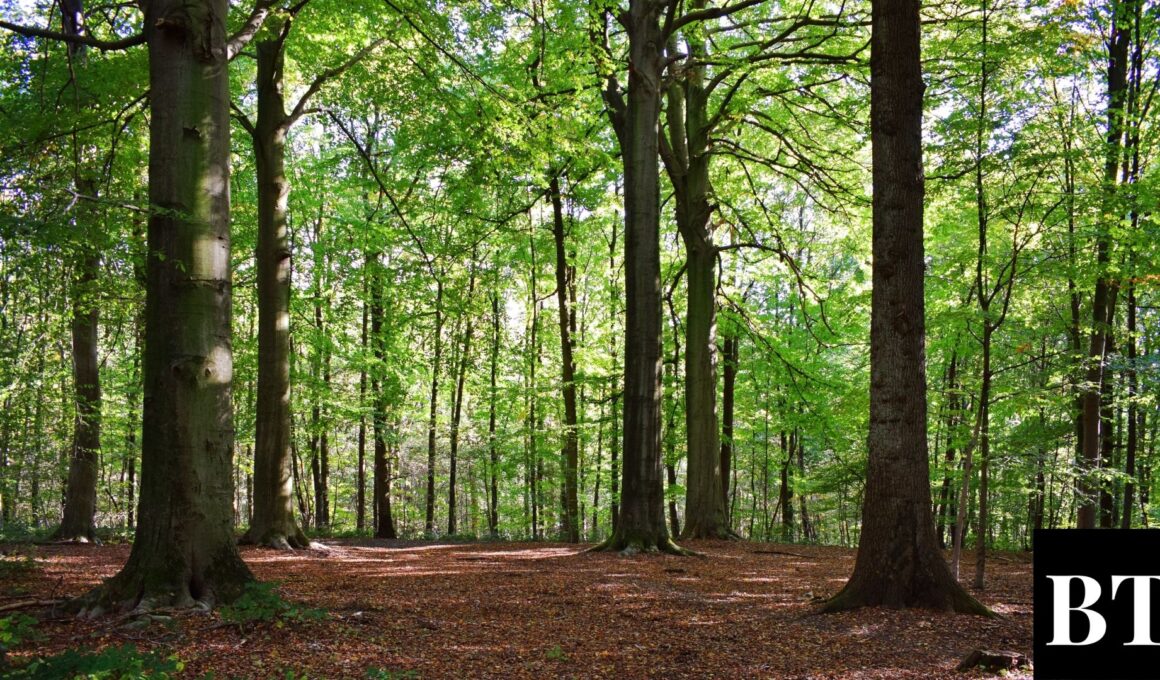Trees hold a multifaceted role in our gardens and landscapes, marrying functionality with aesthetic appeal. They stand as majestic structures that lend shade, create a sense of privacy, and serve as hosts to a myriad of wildlife, thereby enlivening our outdoor spaces with bustling activity and varied, vibrant colors across seasons. Particularly, the shade provided by trees not only creates a cool respite during hot days but also aids in protecting the garden landscapes from the harsh sun, preserving the vitality of the lawn and other plant life.
Fast-growing trees, renowned for their rapid development and ability to quickly transform any garden space, are often sought after by gardeners and landscape designers alike. Their swift maturation ensures that the visions of lush canopies, increased privacy, and enhanced aesthetic appeal are realized in a relatively short span of time. In the subsequent sections, we will delve into a selection of fast-growing tree species, exploring their individual characteristics, growth rates, and ideal conditions for planting, all aimed to equip you with the knowledge to invigorate your garden with swift, flourishing growth.
Key Considerations for Selecting Trees
Garden Size and Layout

Opting for trees that complement the size and layout of your garden is vital to ensuring their healthy growth and maintaining the aesthetic balance of your outdoor space. It’s crucial to acknowledge the potential size and spread of a fully-grown tree, ensuring that it won’t overshadow other plants or become an obtrusive element in your garden. Considering the spatial distribution, proximity to buildings, and the impact on underlying vegetation ensures that the selected trees enhance, rather than hinder, the overall layout and functionality of your garden.
Climate Suitability
Different tree species are adapted to various climate conditions, thereby influencing their ability to flourish in specific regions. Taking into account the typical weather patterns, temperature ranges, and soil conditions of your area will guide you towards choosing tree species that are well-suited and will thrive in your local climate.
This involves considering aspects such as drought tolerance, resilience to frost, and susceptibility to local pests and diseases, which significantly influence the vitality and longevity of the trees.
Maintenance Level
While fast-growing trees can quickly transform a space, they may also come with varied maintenance demands. These can range from regular pruning to manage their size and shape, dealing with fallen leaves during autumn, and addressing any pest or disease issues that may arise.
Understanding and being prepared for the maintenance level of your chosen trees is imperative, ensuring that they remain healthy, vibrant, and continue to enhance your garden through each passing season. This, in turn, guarantees that the trees serve their intended purpose, whether it be providing shade, acting as windbreakers, or simply beautifying the space, without becoming burdensome to manage.
You may also like: How to varnish a parquet floor?
5 Fast-Growing Trees
Hybrid Poplar

Overview and Aesthetic Appeal
Hybrid Poplar, known scientifically as Populus deltoides, holds a prominent spot in the list of rapidly growing trees, presenting an amalgamation of aesthetic appeal and practical functionality in a garden setting. Characterized by its lofty stature, appealing foliage that dances with the lightest breeze, and the ability to create an expansive canopy, the hybrid poplar is not only visually appealing but also effective in providing generous shade and acting as a natural windbreaker.
With its tall, sturdy trunk and dense foliage, it can provide both a visually striking focal point and a functional element within your garden.
Growth Rate and Optimal Conditions
Famed for its impressive growth rate, the hybrid poplar can experience surges of upwards to 5-8 feet per year under optimal conditions. Preferring full sun and adaptable to a wide array of soil conditions, it is relatively undemanding in its environmental requirements.
Although it demonstrates a notable degree of tolerance to various soil types, it does exhibit a preference for moist, well-drained soils. Its rapid growth and eventual substantial height necessitate strategic planting, ensuring it doesn’t interfere with power lines or structures as it matures.
Planting and Care Tips
The key to successfully planting and nurturing a hybrid poplar involves a combination of strategic placement, consistent watering, and periodic pruning. Planting should ideally take place in a location that accommodates its expansive growth, while also considering its sunlight and shading patterns.
Regular watering, particularly during dry spells, will facilitate its rapid growth, while pruning helps manage its size, shape, and encourages healthy development. Although hybrid poplars are relatively hardy, being mindful of potential pests and diseases, such as cankers or borers, ensures the long-term health and vitality of the tree.
Silver Maple

Overview and Aesthetic Appeal
Silver Maple (Acer saccharinum), with its distinguishable silvery-white undersides of leaves, provides a vivid and lively aesthetic to any garden. Known for its tall, graceful stature and the unique coloration of its foliage, which can create a mesmerizing visual display especially when caressed by the wind, this tree encapsulates both majestic appearance and dynamic visual interest across seasons.
The foliage presents a brilliant display of color transformations through seasons, gifting observers with rich, vibrant colors especially in the autumn.
Growth Rate and Optimal Conditions
Noted for its swift growth rate, the Silver Maple can provide substantial shade and aesthetic appeal in a relatively short time frame, growing at an average rate of 24 inches per season under conducive conditions.
Although it exhibits a generous level of adaptability to varying soil types, the silver maple thrives optimally in moist, well-drained soils, often gracing riverbanks and wetlands. Sufficient sunlight is another vital component for its thriving, although it does showcase a degree of tolerance to partial shade.
Planting and Care Tips
When it comes to planting and caring for a Silver Maple, certain considerations regarding space, sunlight, and soil conditions should be observed. Plant in a location that allows its roots to spread and where it can rise to its full height without obstruction. While it’s notable for its adaptability, ensuring it is planted in a location where it can receive ample sunlight, and in moist, well-drained soil, will facilitate its growth and health.
Pruning, while often not mandatory due to its robust nature, can be performed to maintain its shape and remove any dead or damaged limbs. Despite its hardiness, be mindful of potential vulnerabilities to pests like aphids and scale, and ensure to keep an eye out for any signs of distress.
Weeping Willow

Overview and Aesthetic Appeal
The Weeping Willow (Salix babylonica) is often immediately recognizable due to its distinctive, drooping branches that gently sway in the wind, providing an ethereal and calming presence in any garden space. Its lush, cascading foliage creates a serene and somewhat melancholy aesthetic, offering not only a visual spectacle but also a secluded, shaded spot underneath its expansive canopy. The leaves, slender and typically light green, shimmer in sunlight, contributing a lively and light-hearted ambiance to its surroundings.
Growth Rate and Optimal Conditions
Notorious for its rapid growth, the Weeping Willow can shoot up to heights of 30 to 50 feet within just a few years under favorable conditions. This species is fond of sunny environments and well-drained, moist, and preferably acidic to neutral soils. Often found beside bodies of water in its natural habitats, it fares well in areas that are receptive to consistent moisture, even tolerating occasional flooding and waterlogged conditions.
Planting and Care Tips
Planting a Weeping Willow entails a keen understanding of its love for sunlight and water. Positioning it in a spot that receives ample daily sunlight while also ensuring that the soil is consistently moist will enhance its growth. While it is quite adaptable to various soil types, providing it with nutrient-rich, well-draining soil will bolster its health and vitality.
Pruning is pivotal to maintain its iconic weeping form and to prevent the branches from becoming too dense. Also, given its fast growth and expansive root system, planting it a safe distance away from underground pipes and septic systems is crucial to avoid any unwanted disruptions. Regular checks for pests, such as aphids and borers, will help in maintaining its health and longevity.
River Birch

Overview and Aesthetic Appeal
The River Birch (Betula nigra) is celebrated for its distinctive, peeling bark which offers a captivating visual texture to landscapes. Displaying shades that intertwine between salmon-pink and reddish-brown, its bark peels away to reveal a lighter, smooth underlayer, crafting a beautiful contrast. Its leaves, diamond-shaped and with a glossy green hue in warmer seasons, transition to a vibrant yellow in the fall, offering seasonal visual interest. The canopy creates a light, dappled shade below, allowing for underplanting with various shade-loving plant species.
Growth Rate and Optimal Conditions
The River Birch is known for its substantial growth rate and can ascend to heights of 40-70 feet with a 40-60 foot spread in an optimal environment. It is quite accommodating when it comes to planting zones, but it especially thrives in moist, slightly acidic soils, replicating its natural habitat along riverbanks. This tree prefers full sun but is able to tolerate partial shade, making it versatile in terms of placement within a garden or landscape.
Planting and Care Tips
Positioning the River Birch in a location where it can obtain ample sunlight and ensuring that its soil conditions are consistently moist will be instrumental in promoting its growth. While it can endure periods of drought once established, younger trees in particular will benefit from regular watering.
The River Birch isn’t particularly demanding regarding soil fertility, but a layer of mulch can aid in retaining soil moisture and regulating root temperature. Minimal pruning is required, mostly to remove any damaged or diseased limbs and to ensure a clean aesthetic. It’s also resistant to most pests and diseases, but occasional checks and preventative measures can be beneficial to ensure its vibrancy and health are sustained.
Red Maple

Overview and Aesthetic Appeal
Red Maple, scientifically known as Acer rubrum, is one of the most common and widespread deciduous trees in North America. It’s celebrated for its stunning fall foliage, where it turns a brilliant shade of red, but it can also showcase colors like orange and deep burgundy. The tree provides not only a splash of color but also offers habitat and food for various wildlife, making it an ecologically beneficial choice.
Growth Rate and Optimal Conditions
The Red Maple is renowned for its swift growth rate. Under ideal conditions, this tree can grow anywhere from 3 to 5 feet a year. It thrives in a variety of soil types, from dry sandy soils to wetter clay soils, but prefers slightly acidic, moist conditions. It’s best suited for USDA hardiness zones 3-9. While it can tolerate partial shade, for the best color, planting in full sunlight is recommended.
Planting and Care Tips
- Planting: When planting a Red Maple, choose a location that offers ample space for its sprawling root system and canopy. Dig a hole twice as wide as the root ball but not deeper. Ensure the tree is planted upright, and the top of the root ball is level with the ground surface. Fill the hole, tamp down the soil, and water it thoroughly.
- Watering: While the Red Maple is moderately drought-tolerant, it’s best to water it regularly, especially during dry spells. The soil should be kept consistently moist but not waterlogged.
- Mulching: Applying a layer of organic mulch around the base can help retain moisture, regulate soil temperature, and suppress weeds. Ensure the mulch doesn’t touch the tree trunk to prevent rot.
- Pruning: Prune the tree during its dormant stage, typically late winter or early spring. Remove dead, damaged, or crowded branches to promote healthy growth and shape the tree. Regularly inspect for any signs of pests or diseases.
Maintaining Healthy Trees
Fast-growing trees, while providing swift shade and beauty, also need appropriate care to ensure their health and longevity. Maintenance is key to preserving the vitality of these trees and ensuring that they remain an asset to your garden for years to come.
Watering Strategies for Robust Growth
Watering is fundamental for any tree’s growth, but it’s especially crucial for fast-growers which can have increased water demands. However, overwatering can also be detrimental. It’s essential to understand the specific water needs of each tree species. Using mulch around the tree base can help retain moisture, and ensuring proper soil drainage can prevent root rot.
Pruning Guidelines and Timing
Pruning not only helps shape the tree but also ensures its health by removing dead or diseased branches. For most trees, late winter or early spring, when the tree is dormant, is the best time for pruning. However, always refer to species-specific guidelines. Regularly inspect the tree for any unusual growth patterns or broken branches.
Pest Control and Disease Management
Fast-growing trees can sometimes be susceptible to pests and diseases due to their rapid growth. Regularly inspect the leaves, bark, and roots for any signs of infestation or disease. Organic pesticides and fungicides can help in treating most problems. In severe cases, consulting an arborist or tree expert is advisable to prevent further damage.




